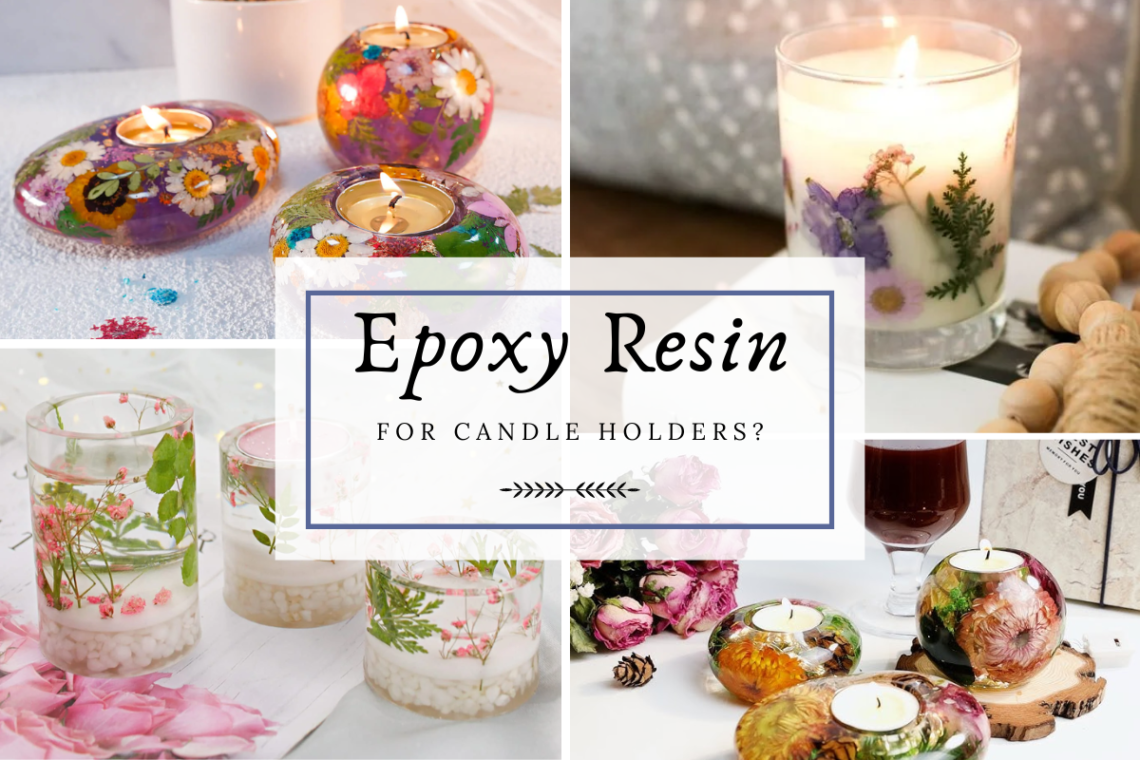
Should you use Epoxy resin to make Resin candle Holders?
If you’re an avid candle maker, (like me!) you’ve probably contemplated other possible options for candles jars than the usual glass or cement ones we’re all used to. You’re probably wondering whether resin is a good alternative for candle holders or jars. And the answer to that is: It depends!
What is Resin?
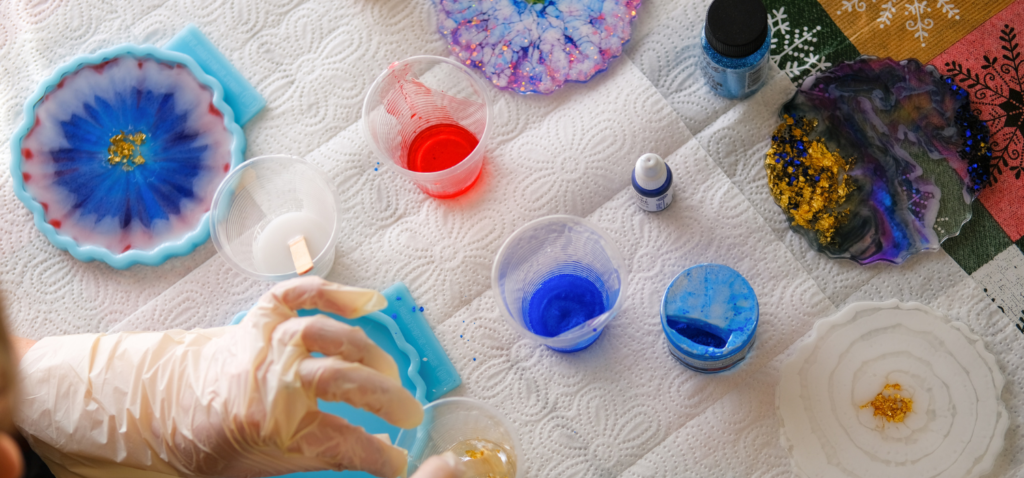
Resin can be used in a variety of ways, but one common use for resin is in crafts. In crafting, resin refers to a type of material commonly used for creating various decorative items, including vases and jars. Resin is a synthetic material that typically comes in liquid form and hardens into a clear, durable, and glossy finish when cured. It’s a popular choice for crafting because of its versatility and ability to capture intricate details.
There are different types of resin used in crafting, but epoxy resin is one of the most common choices and the one you’re probably familiar with. Epoxy resin typically consists of two components – resin and hardener – that are mixed together in specific ratios to initiate a chemical reaction, resulting in the material hardening.
Epoxy resin is generally heat resistant to a certain extent, but its specific temperature limits and thermal properties can vary depending on the formulation and brand. Here’s a breakdown of epoxy resin’s thermal properties and flammability:
Temperature Limits
Epoxy resin typically has a heat resistance ranging from around 120°C to 150°C (248°F to 302°F) for continuous use. However, some specialty formulations may offer higher heat resistance, reaching temperatures up to 200°C (392°F) or more. It’s essential to check the manufacturer’s specifications for the specific epoxy resin product you’re using to determine its temperature limits.
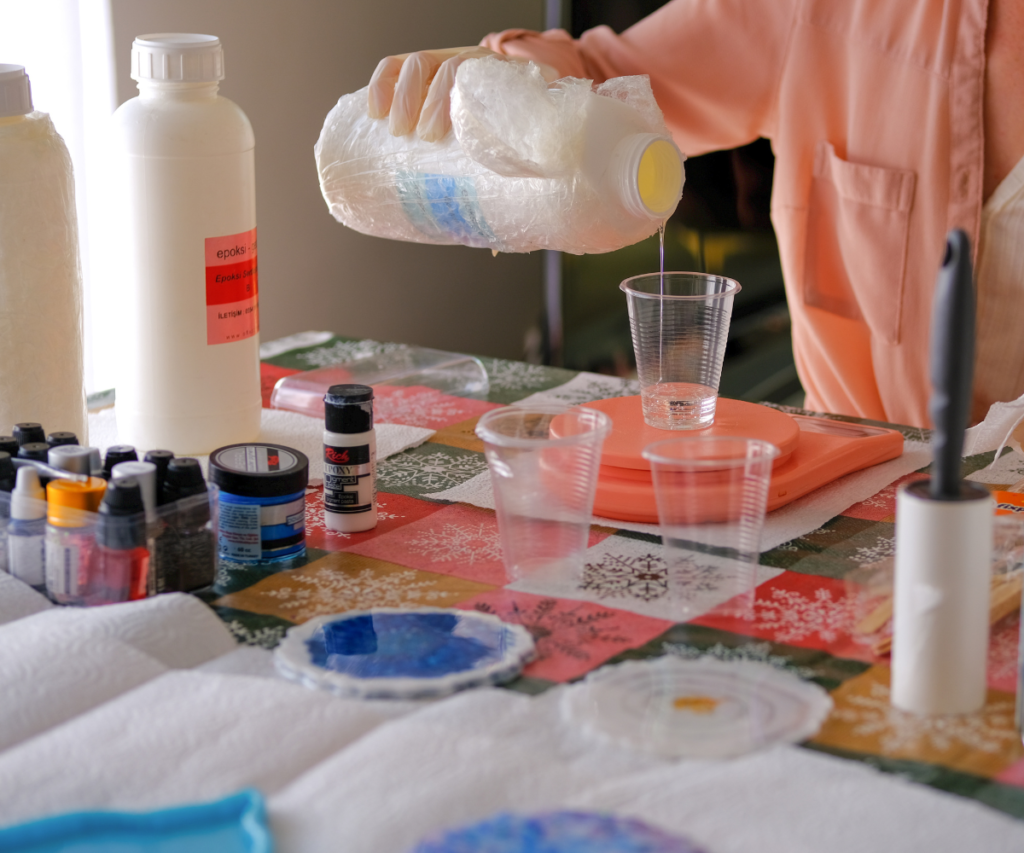
Thermal Properties
Epoxy resin is known for its excellent thermal insulation properties, making it suitable for various applications where temperature resistance is required. However, it’s essential to note that prolonged exposure to high temperatures can cause epoxy resin to degrade or soften, potentially leading to structural weakness or deformation.
Flammability
Epoxy resin itself is typically not highly flammable once it has cured. However, during the curing process, epoxy resins typically produce heat as they undergo an exothermic reaction, which could pose a fire risk if not properly managed. Additionally, some epoxy resin formulations may contain additives or fillers that could affect their flammability, so it’s essential to follow the manufacturer’s safety recommendations and guidelines.
Also, keep in mind that with enough heat, certain resins like epoxy resin may soften and deform, and therefore lose it’s shape. It’s important to keep this in mind when using resin for some of your crafting projects.

Can I use epoxy resin to make candle jars and holders?
So here is where the “maybe, it depends” comes into play. I always err on the side of caution when it comes to anything that might potentially be flammable and catch fire – especially if you intend to make crafts to give as gifts or to sell.
Lots of people will suggest you not to use epoxy resin as your sole material for candle holders or jars, and I agree with them on this. If you are pour a standalone silicone jar mold with resin by itself, and then fill that cured jar with a wick and candle wax, I would caution against this method. However, if you incase something inside the epoxy resin before pouring in the wax, this can help create a barrier and avoid your resin catching fire.
There are many options to incasing such as adding an internal glass barrier such as a jar or vase, and enclosing it with a resin project of your choice. There are also other alternatives such as cement or even some types of Jesmonite!

Alternatives to Resin Candle Holders
You’re probably still unsure whether you want to stick to using epoxy resin to make your candle holders, especially knowing the heat risks. Luckily, there’s a bunch of other cheap, quick & easy to make, and equally beautiful alternatives!
Concrete/Cement
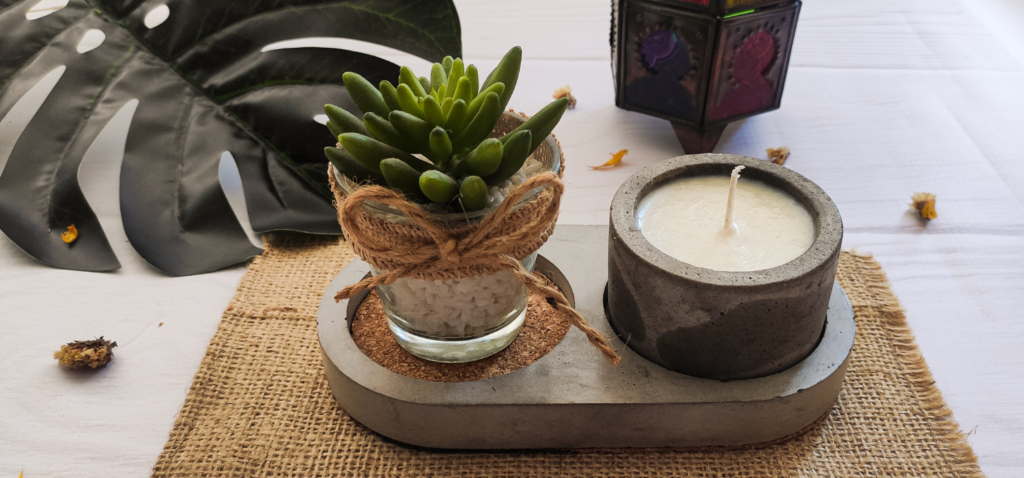
Concrete or cement can be molded into various shapes and sizes to create unique candle holders. You can add pigments, textures, or embed decorative elements like stones or glass to enhance their appearance.
You’ll want to make sure you’ve got sturdy silicone molds at bay when making your vases and candle holders.
Check out my article on some quirky and fun silicone mold vases and shapes, perfect to use with cement and other setting materials (such as jesmonite and epoxy resin!)
The great thing about cement is its a really sturdy material to work with. It’s not brittle and can handle heat really well! It is, in my opinion, the perfect option for candle jars!
Jesmonite
Ever heard of Jesmonite?
Jesmonite is a versatile material that can be used to create candle holders with various finishes, including matte, glossy, or textured. It’s a lightweight alternative to concrete with similar aesthetic possibilities. . It’s a composite material made from a gypsum-based powder combined with water-based resin, which can be reinforced with various additives such as glass fibers. Jesmonite is known for its strength, durability, and ability to replicate the look and feel of natural materials like stone and concrete while being much lighter.
In terms of its thermal and heat properties, Jesmonite generally has good heat resistance, making it suitable for use in candle holders and vases. Both Jesmonite AC100 and AC730 are fire-resistant. You just have to make sure that you seal it well with a good sealer (make sure to research which sealer works well and has been flame-tested).
Heat Resistance: Jesmonite can withstand moderate heat, but prolonged exposure to high temperatures may cause it to degrade or discolor. It’s advisable to use caution with very hot candles or to incorporate protective elements like metal inserts or heat-resistant coatings.
Insulating Properties: Jesmonite has insulating properties, which means it can help retain heat. This can be advantageous in candle holders, as it can prevent excessive heat from reaching surfaces or nearby objects.
Thermal Expansion: Like many materials, Jesmonite expands and contracts with changes in temperature. Care should be taken to accommodate for this expansion to prevent cracking or warping, especially in larger or more complex designs.
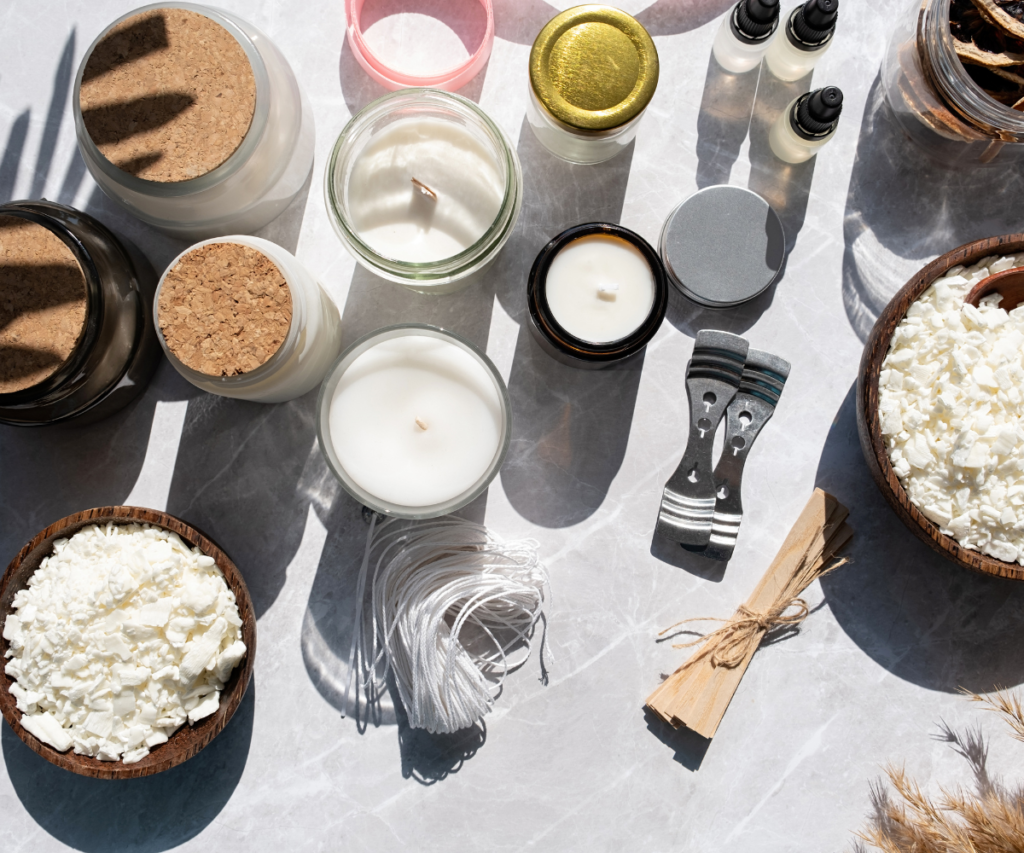
Metal
Metal candle holders can be forged, welded, or crafted from sheet metal to achieve various designs and finishes. Materials like copper, brass, or steel offer durability and a range of aesthetic possibilities, including sleek contemporary designs or intricate patterns.
This method takes longer to product and probably not as efficient if you want to sell your crafts. But its a great alternative to try if you’re experimenting around with other vase and holder materials.
Glass
Glass candle holders can be blown, fused, or molded into different shapes and colors. You can create transparent holders to showcase the candle’s flame or opt for opaque or colored glass for a decorative effect. Consider incorporating techniques like etching or stained glass for added visual interest.

These alternatives offer a diverse range of materials and techniques to explore, allowing you to create candle holders that suit your style and preferences.


